In the corners of X where Roman marble profile pictures reign supreme, it’s common to lament the modern world’s lackluster architecture and long for a return to the past.
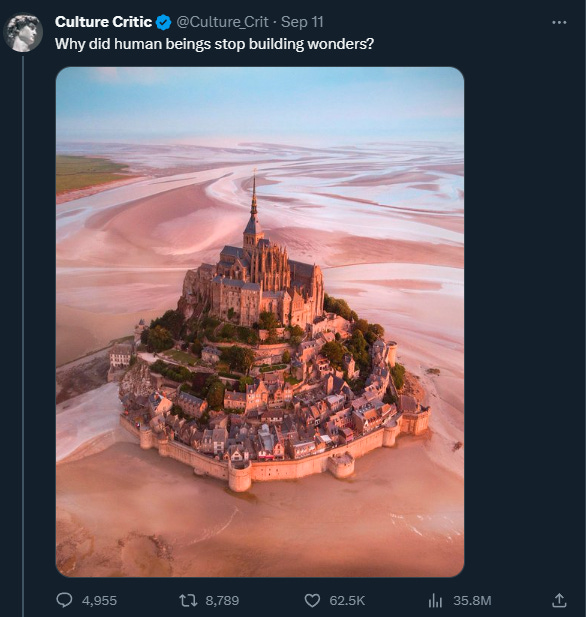
These takes also appealed to silicon-valley techno-optimist types (including me). Not because they wished to return to the past, but because they are a salient example of stagnation in a world where suicide nets take 6 times longer to build than the Empire State Building.
But the sands are shifting and techno-optimists are finding hope for humanity’s wonder building capacities in the opening of the Sphere in Las Vegas.
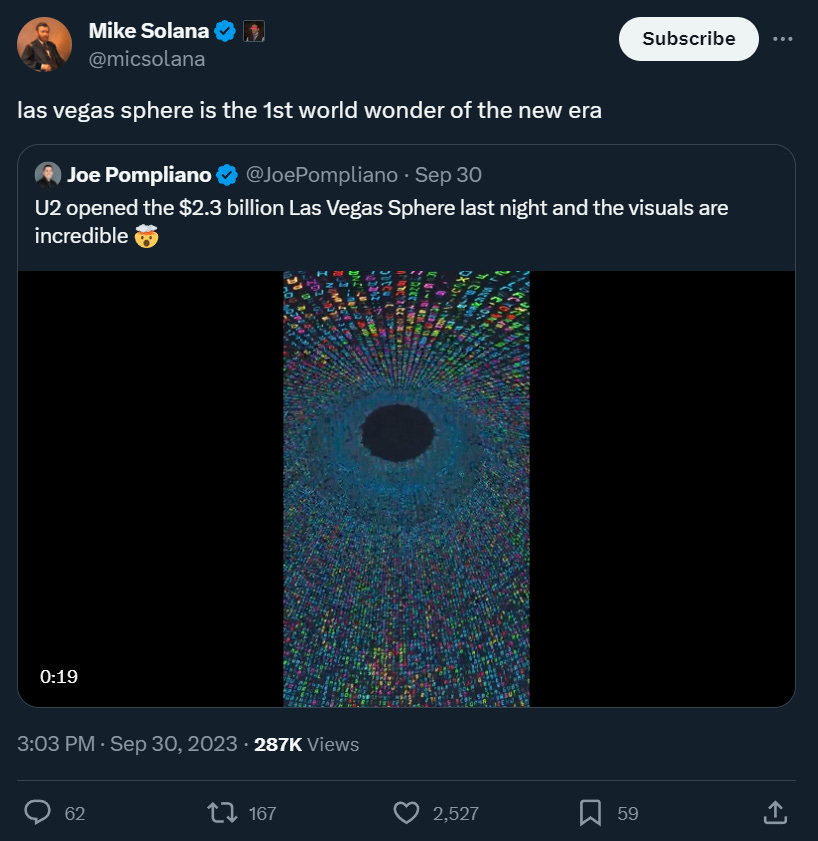
I think the Sphere is awesome and it deserves praise. How could you not love an unignorable, see-it-from-space, optical illusion in the form of a building?
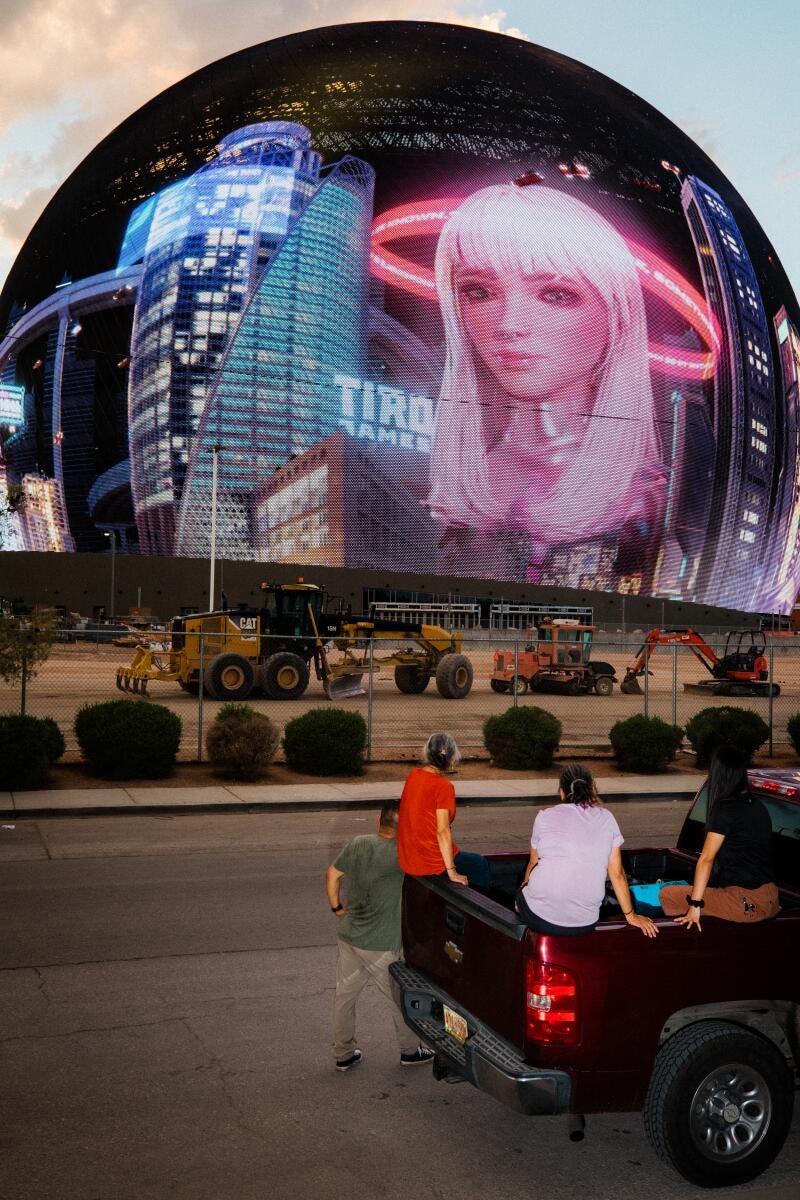
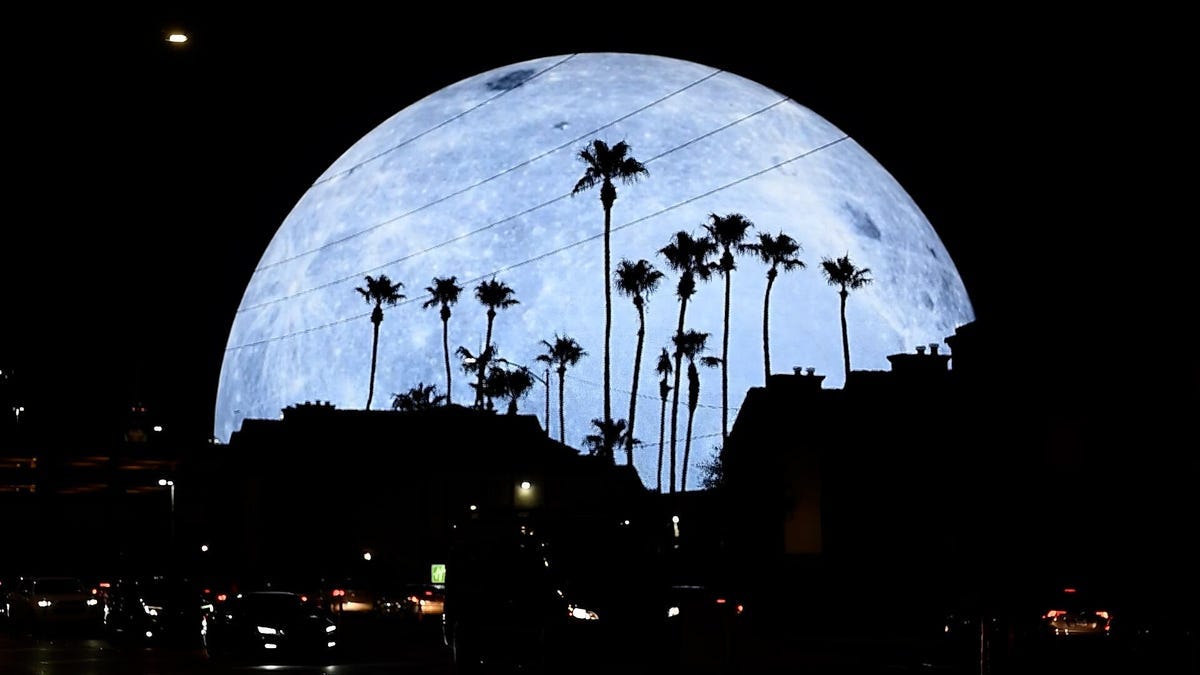
But I don’t think it qualifies as a monument or world wonder. Not because it’s a gaudy entertainment venue, some of the best world wonders fit that description. The reason the Sphere is disqualified is that it’s fragile.
The greatest monuments of the ancient world lasted through the rise and fall of empires. All of them have been degraded over the years, but they have an independence that allows them to survive centuries of neglect. Petra is still standing two millennia after it lost the trading wealth that built it. Destroying the Pyramids of Giza is almost as hard as building them in the first place.
The Sphere, on the other hand, requires a second-to-second connection to massive external networks of electricity production, tourism, and transportation. To run the indoor and outdoor screens it needs almost around 250 MWh of power to be transmitted from Texas every day, which is about the average daily energy use of 8,000 households. Using lots of energy is great, but the Sphere relies too much on institutional factors that true monuments should be able to outlast.
It needs a functioning and well-administered inter-state electricity grid. It needs upkeep and expansion of long-distance transmission lines which are frequent victims of NEPA slowdowns. The exact economics of the Sphere are not public, but it is probably quite sensitive to electricity prices. Some shock like the US saw in the 1970s or like Europe saw the past couple of years might be enough to put the stadium in the red, turn off the lights, and possibly even get it demolished.
Electricity is the main component on the cost side but there are also risks on the demand side. Anything which upsets the economy and tourism of Vegas would endanger the Sphere’s existence. For example, technological depreciation of air travel, rising desert temperatures, water conflicts or regulatory objections to gambling. I don’t think any of these are particularly likely, but the point is that the Sphere is not robust to these kinds of risks, so it is unlikely to survive a long time.
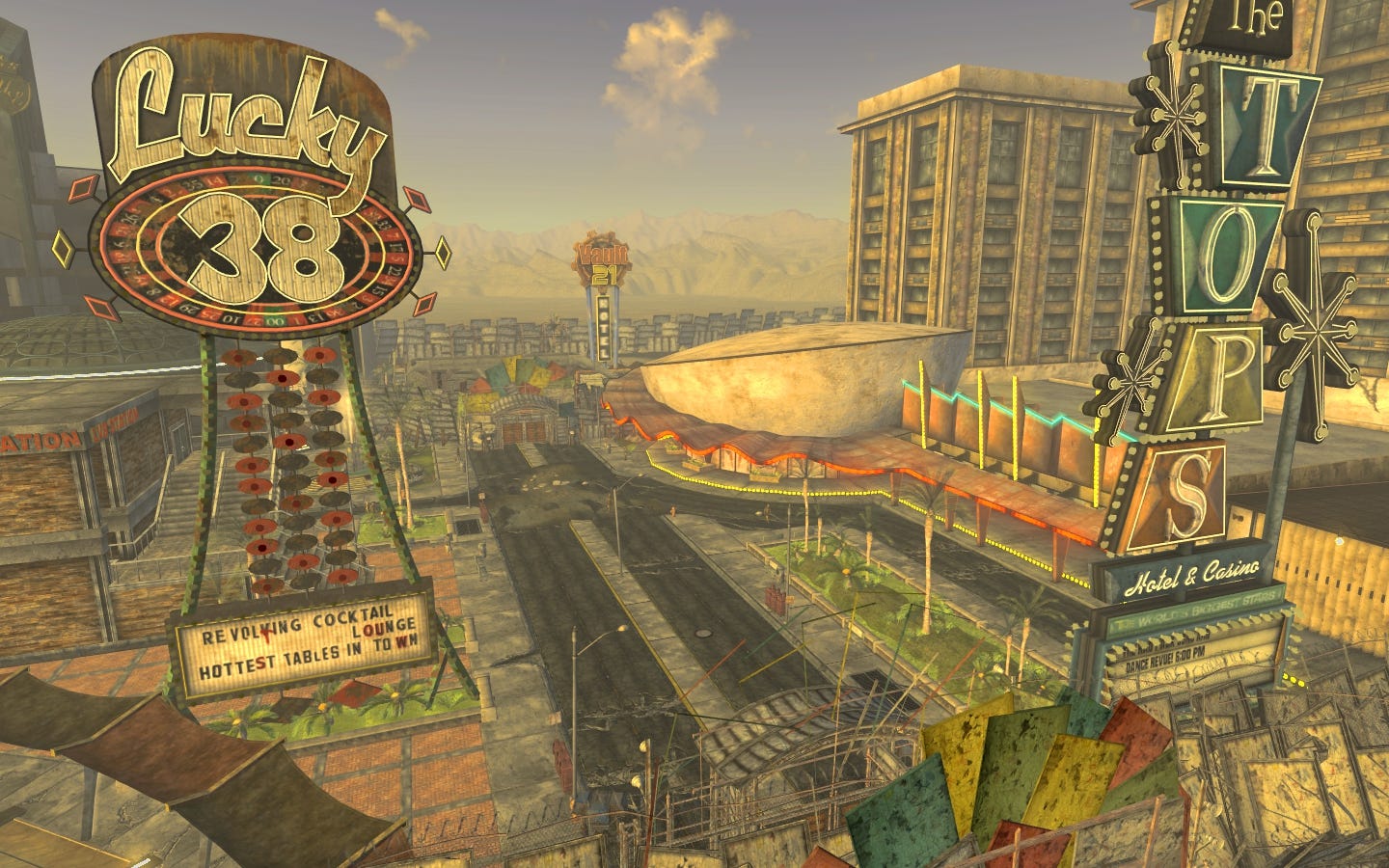
The majority of the value of the Sphere comes from the flow of electricity to power its screens and the flow of tourists to watch them. These flows are vulnerable even to relatively mild shocks and they are easy to divert away from the Sphere when it comes on hard times. Compare that to something like the Pantheon in Rome. Most of its value comes from the fixed stock of architectural beauty instantiated in stone. Even when its parent empire collapsed and the Pantheon was near useless, it remained. You can’t turn the Pantheon off and you can’t divert its architectural beauty somewhere else. Many Roman buildings were deconstructed for their stone, but it’s not as easy as turning off the lights.
There is no chance that the Sphere could last through a “Fall of Rome” and it probably couldn’t hack it through another pandemic. I’d love to see a show at the Sphere but it doesn’t stand on its own, so it doesn’t rank among greatest monuments of yore.
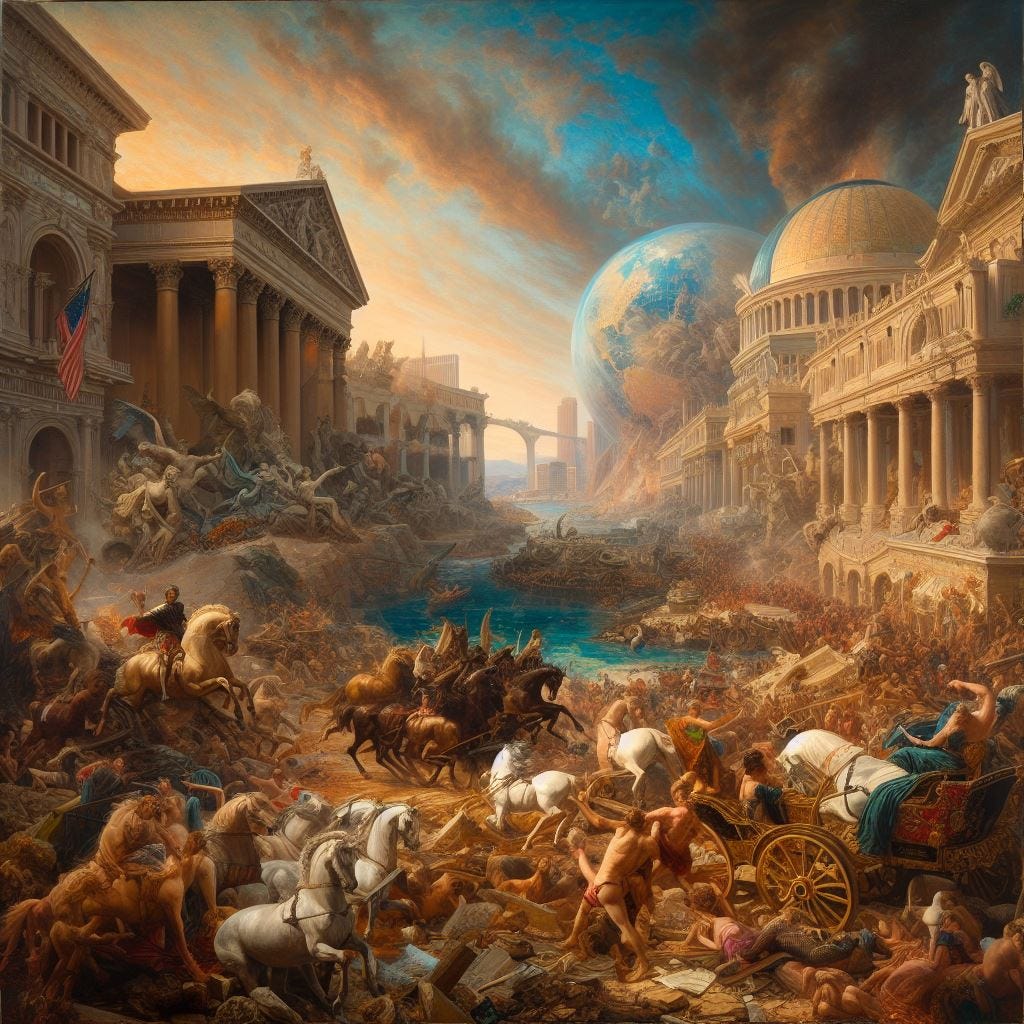
There is one thing the Sphere could do that might make it the 1st true world wonder of the new era: build a robust, low maintenance, independent energy supply. Las Vegas is one of the best spots in the world for solar power, so plastering the parking lot with solar panels is an easy first step. That won’t be enough power though. You could also stick a small modular reactor in the basement, but refueling needs would arguably connect you to an even more fragile international supply chain. Any attempt at a robust independent power supply would be ridiculously expensive and bring zero short-term benefits. But that’s what monuments are for.
